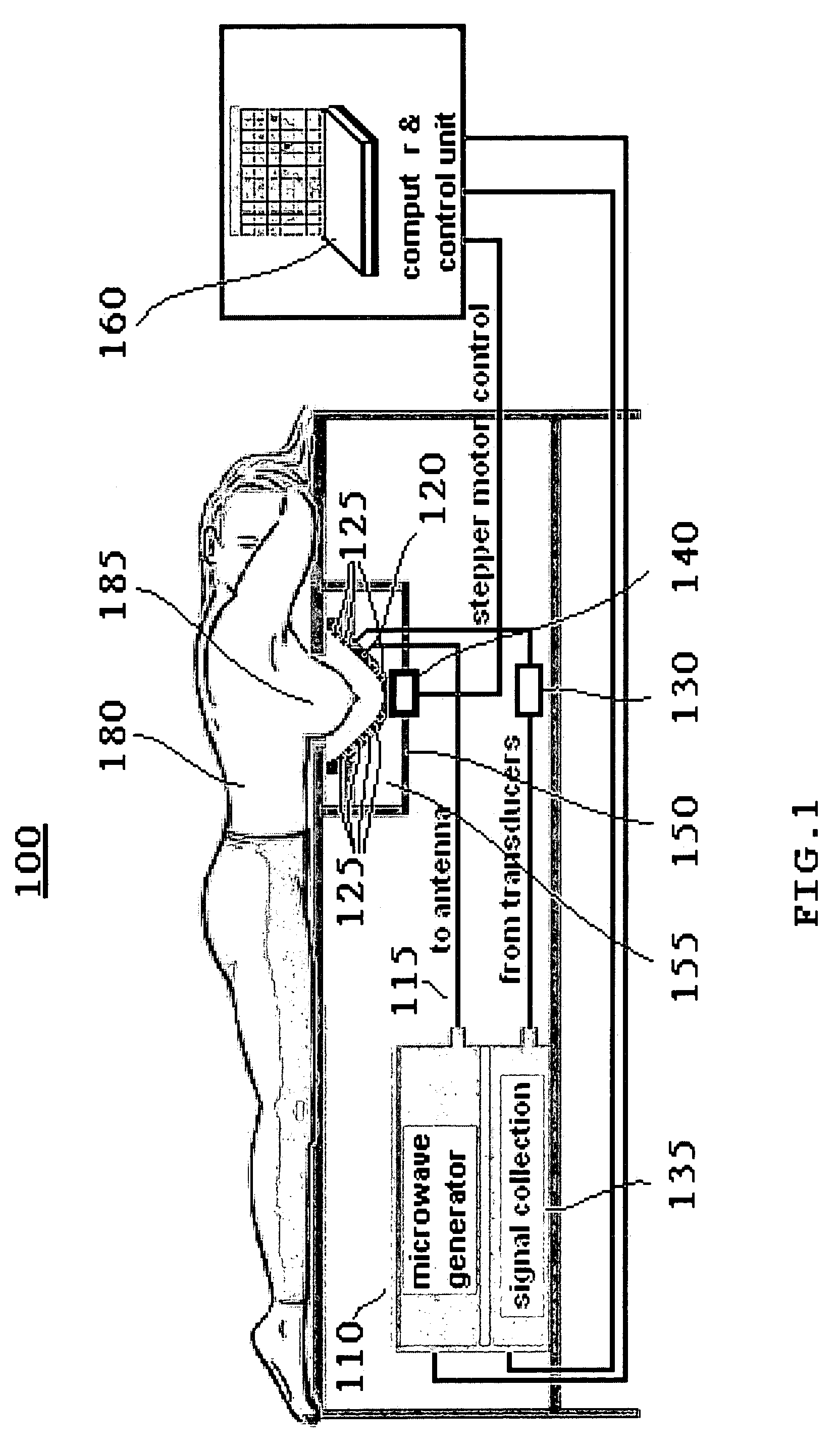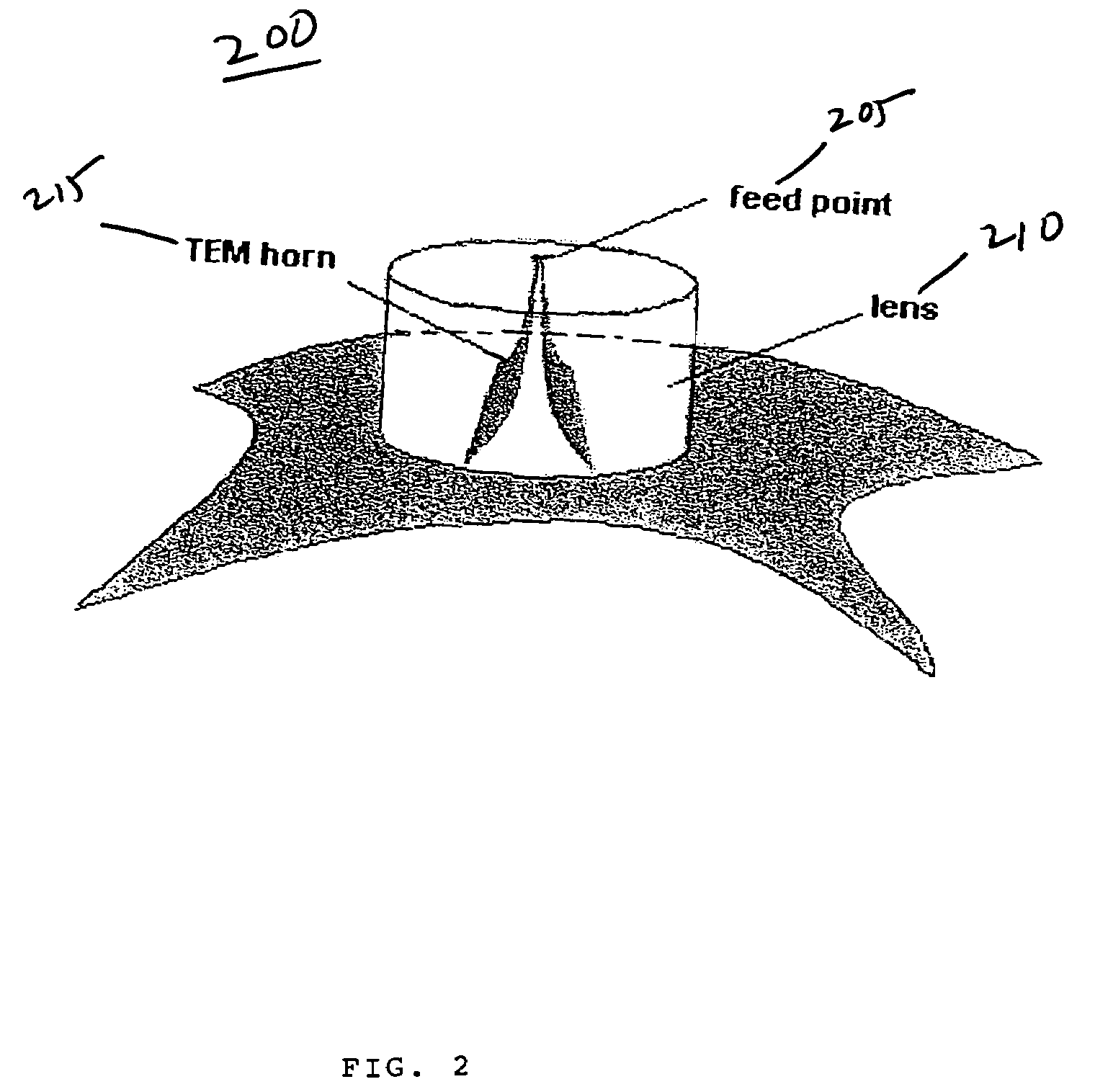Multi-frequency microwave-induced thermoacoustic imaging of biological tissue
a biological tissue and microwave-induced technology, applied in mammography, medical science, diagnostics, etc., can solve the problems of breast bruising, mammography is significantly less accurate in patients with dense glandular breasts, and mammography is typically not able to differentiate benign from malignant diseases, so as to improve the impedance match
- Summary
- Abstract
- Description
- Claims
- Application Information
AI Technical Summary
Benefits of technology
Problems solved by technology
Method used
Image
Examples
Embodiment Construction
[0027]A method of examining biological samples and related system radiates a tissue region with a plurality of short microwave radiation pulses, wherein the plurality of radiation pulses are swept across a range of microwave frequencies. Although the biological sample is generally described herein as being human breast tissue, the systems and methods described herein are suitable for imaging other human tissue regions, and tissues from non-human subjects, such as animals.
[0028]A microwave is generally defined as an electromagnetic wave having a wavelength from 300 mm to 10 mm, corresponding to a frequency of 1 GHz to 30 GHz. The microwave frequency generally regarded as a carrier frequency, and the beam is generally defined by the radiation pattern. The microwave pulses are generally in a frequency range from about 1 GHz to 10 GHz to provide sufficient penetration depth into normally lossy biological tissue. The range of microwave frequencies preferably spans a frequency range of at...
PUM
 Login to View More
Login to View More Abstract
Description
Claims
Application Information
 Login to View More
Login to View More - R&D
- Intellectual Property
- Life Sciences
- Materials
- Tech Scout
- Unparalleled Data Quality
- Higher Quality Content
- 60% Fewer Hallucinations
Browse by: Latest US Patents, China's latest patents, Technical Efficacy Thesaurus, Application Domain, Technology Topic, Popular Technical Reports.
© 2025 PatSnap. All rights reserved.Legal|Privacy policy|Modern Slavery Act Transparency Statement|Sitemap|About US| Contact US: help@patsnap.com



